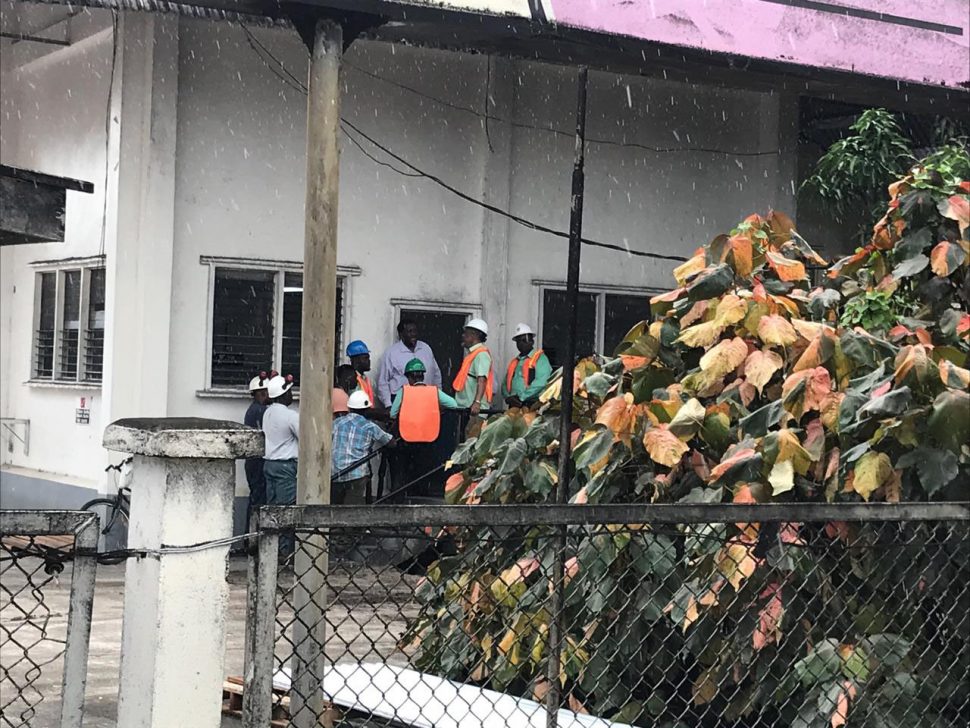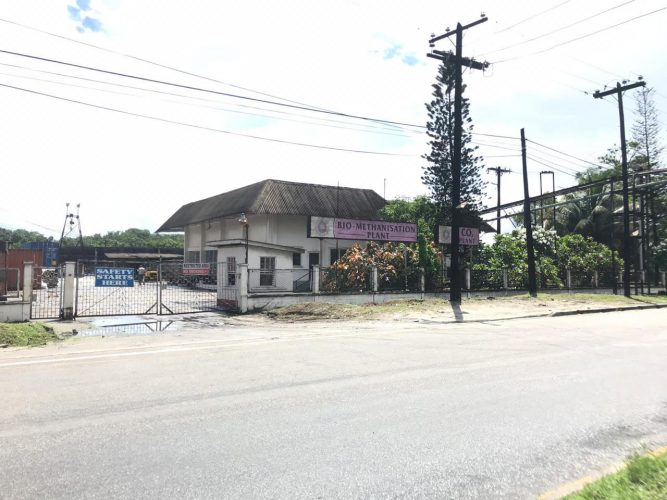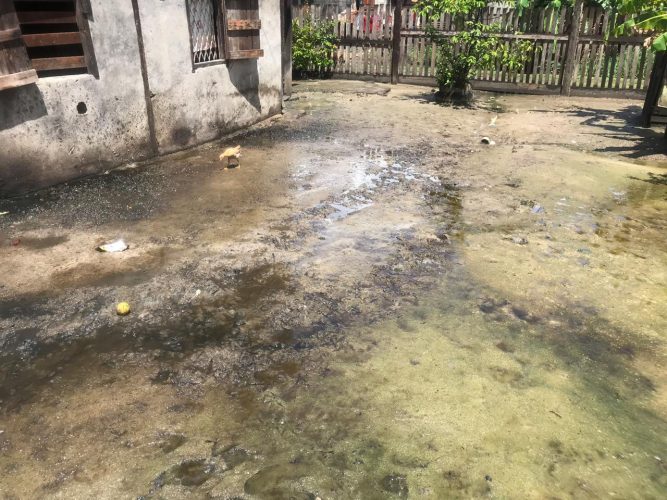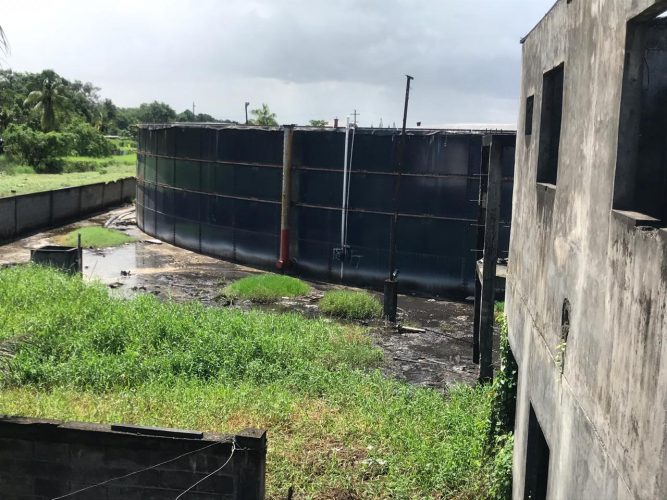All of Demerara Distillers Limited’s (DDL) operations will be reviewed by the Environmental Protection Agency (EPA), after a number of environmental infringements were observed by an EPA team during a visit, head of the agency Dr. Vincent Adams said yesterday.
“I will be sending in an entire team of environmental officers to review the entire operations over and beyond the biodigester, over at the operation of the distillery and everything. I noticed they are also sending waste openly into the canals, so there are a lot of infringements as far as environmental practices are concerned,” Adams told Stabroek News at the conclusion of his visit to the plant yesterday.
There was no media response by DDL yesterday to Adams’ visit.
Adams, along with three other officers, visited the biomethanation plant to have a firsthand understanding of the existing situation and ensure that the cease order issued on Saturday was in effect.
Residents of Great Diamond had filed a complaint with the EPA after their yards and roadways had been swamped by waste water from the biomethanation plant. The residents have complained that they are constantly flooded by waste water released from the plant.
Adams explained that they have asked DDL to furnish them with information on the operations of the company for review. Those documents are expected to be submitted today. According to the EPA head, the company has several applications at his agency requesting permission to operate. Before any permits are granted, Adams said the company will have to provide the necessary documentation for review by his officers.
“…we have given them some strict deadlines. They are supposed to submit a whole lot of information more with diagrams showing the pipe flow, fluid flow and waste flow, where it comes from and where it goes and that was supposed to be submitted tomorrow (today). My officers are going to review it and then the EPA team will be out here looking at every corner of this operation, from top to bottom, making comparison with what they see in the diagram to make sure that it is functioning before we issue any permits,” Adams emphasised.
Touching on his visit to the community, the EPA head said that from his observation and judgment, the situation resulted from the “irresponsible behaviour” of the company.
Adams, in his view, said that DDL has been operating the biomethanation plant below standard practices.
“It is not common practice for you to have those big storage without a secondary containment, just in case …the tank leaks and that is exactly what is happening. It is a standard practice all over the world for you to have a secondary containment over and above the volume of the tank so just in case it leaks it is collected in that secondary containment. That doesn’t exist here though…” Adams stressed.
“We did a walk down through the alleys and the neighbourhood, walked the entire facility but what we saw is very, very disturbing, as I indicated to the managers of DDL, I think it is just irresponsible, which I told them. I also went into the operations to verify that it has been shut down,” he said at the conclusion of his visit to the site.
DDL is expected to furnish the EPA with a cleanup plan today, detailing how they intend to remedy the issue.
DDL’s public relations representative, Alex Graham, had told Stabroek News on Sunday that the issue was caused by an extremely high tide on Monday last, that caused flooding to residents’ properties, in the DDL compound and on the public road.
He said that when the water began to recede, it carried some of the treated wastewater onto the residents’ premises.
Graham said that the residents complained to the Neighbourhood Democratic Council (NDC), which subsequently called in the EPA. He said that DDL was not aware of the EPA’s involvement until they were called to a meeting with them on Saturday. The meeting was between the EPA, the NDC and three residents.
Adams said that “it should be the company’s responsibility to proactively make sure that things are done safely in the interest of the community not just for their business interest.”
He said the team is right now focused on taking specific remedial actions and in rolling out their response.
Sand
During Stabroek News’ return to the community, remedial works were observed being undertaken by the company. Inside the Biomethanation Plant compound, Stabroek News observed an excavator distributing sand at swampy sections around the storage tanks. A walk through the affected area showed grass cutters attached to the company weeding bushes that had prevented drainage.
Residents said after complaining for years, it is the first time they have seen swift action from the company to remedy the situation. They said that they would wish to see a permanent solution to the issue, since they are not only affected by the waste water but the high stench circulating in the air.
“We have been struggling here for years. What you are smelling here is nothing, it is only like five percent of what we would have to face. It is mild right now,” a resident said.
Another resident, who is a mother of seven, said when the plant began operating, she was forced to move as she was living too close to one of the tanks.
“My baby skin gets a rash every couple days. We keep running to the hospital because the bumps keep coming up. They can’t play in the yard or on the dams because this water in everybody yard and on the dam. When they start boiling this gas, it’s two and three in the morning, everybody have to wake up because it [the stench] can stifle you in your sleep. It is not an easy situation for us here,” the woman lamented.
Another woman added that the particles from the smoke would cause the appliances to cease working. She explained that from time to time, after inhaling the unpleasant smell, they would experience burning sensations in their chest.
One resident also stated that because of water lodging in his yard, the foundation of his house has slowly begun to deteriorate. He said he had to repair cracks on his concrete walls in a bid to save his home.









